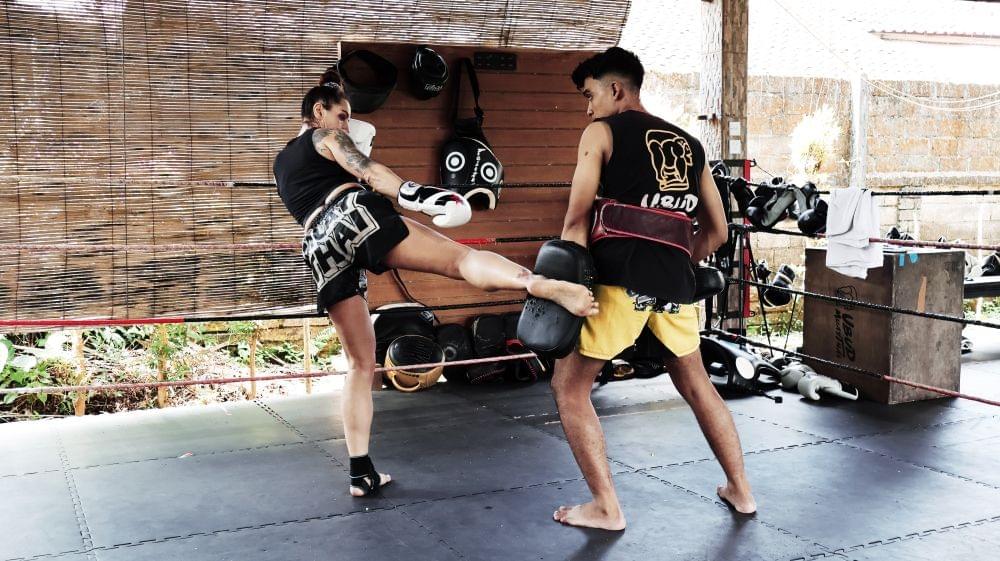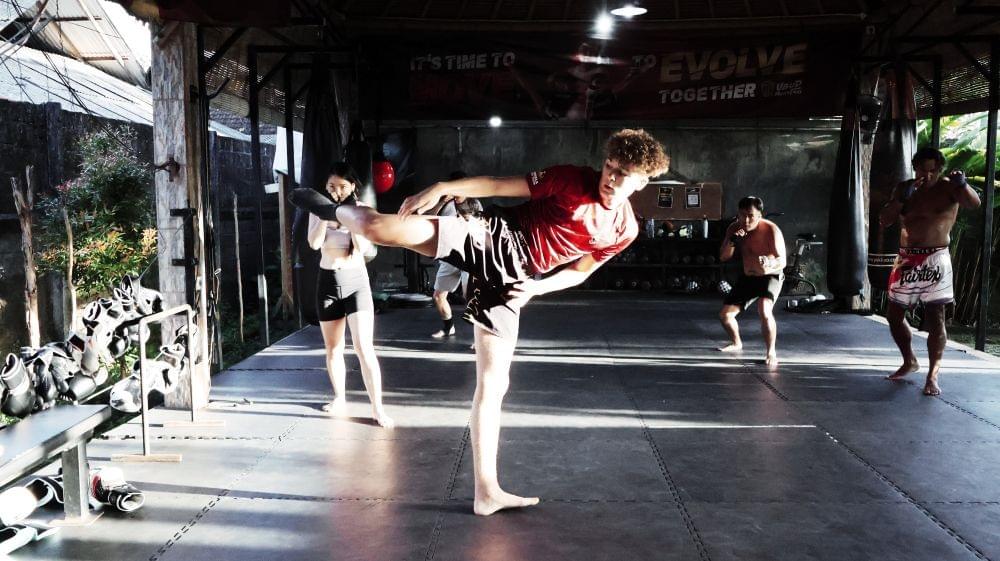Few things in striking hurt as much, or change a fight as quickly, as a well-timed leg kick. In Muay Thai, repeated low kicks can drain your movement, sap your power, and even end a fight.
That’s why learning the right way to defend them is essential. Checking a kick isn’t just about blocking; it’s about using technique, balance, and timing to protect yourself while creating openings for counters. Master this skill, and you not only reduce damage but also send a clear message: every strike your opponent throws comes at a cost.
Understanding the Leg Kick
A leg kick is designed to target your thigh, calf, or inside leg, aiming to weaken your base and limit mobility. Fighters who eat too many unchecked kicks often find their movement slowed, their balance compromised, and their ability to throw powerful strikes severely reduced.
In Muay Thai, the leg kick is more than a simple strike; it’s a strategy to chip away at your foundation until the rest of your game falls apart. Knowing the damage it can cause is the first step toward understanding why the check is so important.
The Basics of a Leg Kick Check
Step 1: Maintain proper fighting stance
Keep your feet shoulder-width apart with your weight slightly more on the back leg. This makes your front leg lighter and quicker to lift for the check. Stay relaxed but ready, with your eyes on your opponent’s hips, since that’s where the kick usually begins.
Step 2: Lift your leg with your knee slightly bent
When you see the kick coming, lift your lead leg straight up without swinging. Bend the knee just enough to keep balance while bracing for impact. Imagine raising your shin like a shield, controlled, not rushed.
Step 3: Rotate the shin outward to meet the kick
Turn your knee outward so that the hard part of your shin connects with your opponent’s strike. This creates a “wall” that protects your thigh and transfers pain back to the kicker. If timed well, they’ll think twice before throwing the same kick again.
Step 4: Keep your hands up for defense
Don’t forget your upper body. Keep both hands high to protect your head and chin, because smart opponents often combine leg kicks with punches. By staying covered, you defend both high and low attacks at the same time.
Timing and Anticipation
Checking a leg kick is as much about reading your opponent as it is about technique. Good fighters rarely throw leg kicks in isolation; they set them up with jabs, feints, or combinations. By studying patterns and body language, you can anticipate when the kick is coming.
The key is reacting early enough to lift and turn your leg before impact, but not so early that your opponent can bait you into checking a feint. Practicing with partners at different speeds builds the reflexes to time your check naturally. With experience, the check becomes less about conscious thought and more about instinct; your body responds before your mind catches up.
Common Mistakes to Avoid
Lifting the leg too late
If you react after the kick is already on its way, your shin won’t be in position in time to block. This usually results in the kick landing on your thigh, causing unnecessary damage. The key is to read your opponent’s movement early and lift as soon as you see their hip turning.
Turning the shin too far inward or outward
Over-rotating your shin makes the check less effective and can strain your knee or ankle. If you turn too far in, you leave yourself off balance; too far out, and you expose your inner leg. The goal is a small, controlled rotation, just enough to present the hard ridge of your shin.

Dropping your hands
Many beginners focus only on lifting the leg and forget about their guard. Dropping your hands creates an opening for punches, especially if your opponent mixes up kicks with quick combinations. Always keep your hands up so your defense covers both high and low attacks.
Over-checking
Some fighters lift their leg too often, trying to block every possible kick. This wastes energy and makes you predictable, allowing opponents to bait you with feints and attack elsewhere. Instead, stay patient and only check when you’ve read the kick with certainty.
The ability to check a leg kick is one of the most important defensive tools in striking. Done properly, it doesn’t just block damage; it turns your opponent’s weapon into a liability. By understanding the purpose of the leg kick, practicing the fundamentals of the check, and developing the timing to anticipate attacks, you’ll transform defense into opportunity.

At Ubud Muay Thai in Bali, our trainers break down these skills step by step, helping you build the confidence and technique to defend like a seasoned fighter. If you’re ready to sharpen your game and train in a supportive environment, join us today!

